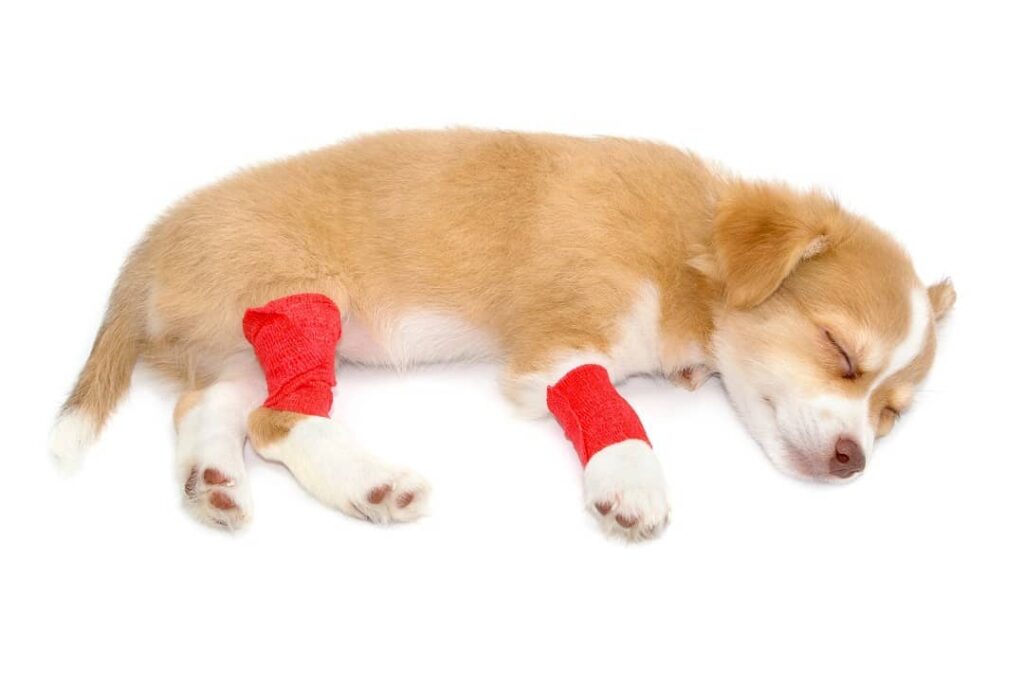One of the most not unusual medical conditions with Chihuahua’s, in particular females, is Patellar Luxation. When we say ‘most not unusual’ it is estimated through professionals that around 10% of the breed will go through with this. So, even though the numbers are not hugely high, it is always really worth keeping an eye in your Chihuahua.
Especially, as previously noted within the ‘Joint Care’ article, Chihuahuas do have a propensity to be lively and fearless whilst jumping off something at height.
What is the Patella?
The Patella is a tiny flat, circular-triangular bone that sits within a tiny groove inside the femur (thigh bone). It is located simply above the tendon of insertion of the quadriceps muscle group, that’s a collection of muscle mass found inside the hind legs of your Chihuahua.
The patella nearly acts like a lever whilst the leg is prolonged and slides very slightly within its groove. It protects the anterior articular floor of the knee joint.
What is Patellar Luxation?
The time period luxate means ‘to put out of joint’ or ‘dislocate’ so Patellar Luxation is in which the kneecap becomes dislocated and moves out of its normal function, the tiny groove in the femur (thigh bone). Usually, once the quadriceps muscular tissues loosen up and lengthen, the patella will go back to its normal role.
Patellar Luxation is typical all the way down to genetic disposition and is greater commonplace in toy breeds inclusive of Chihuahuas, Pomeranians, Yorkshire Terriers, and Maltese to call a few.
As with many other medical situations of bones and joints, it’s worth bearing in thoughts that this situation can also be resulting from trauma.
There are four grades of Patellar Luxation. The number of instances your Chihuahua’s kneecap will become dislocated will rely on the diploma of severity:

How are you able to tell if your Chihuahua has Patellar Luxation?
If you believe you studied your Chihuahua has this condition there are a few common tell-tale signs:
- elevating their hind leg for some moments
- kicking their leg out to the facet
- skipping
When the patella does come to be dislocated your Chihuahua may have hassle bearing weight on that leg, even though hardly ever would there be symptoms of pain. By kicking their leg to the facet it hyperextends the knee which in turn snaps the kneecap back into vicinity, but again, your Chihuahua will not often display any signs of pain while this happens.
Kicking their leg out to the facet may also appear to appear like your Chihuahua is skipping, in which they’ll take a few lame steps but will quick return to ordinary, how regularly your Chihuahua does this is depending on the severity of the condition.
Is a Luxation of the Patella painful on your Chihuahua?
Once the kneecap has emerge as dislocated your Chihuahua should no longer feel any pain, however, there may be a moderate ache as the kneecap to start with slides out of place. It’s not going that your Chihuahua will show any symptoms of pain, so as referred to previously, it’s high-quality to appearance out for tell-tale signs and symptoms.
Keep studying for greater information about remedy and long-term outcomes.
Can your Chihuahua live with Patella Luxation?
Diagnosis and remedies for Patellar Luxation
If you suspect your Chihuahua may additionally have Patellar Luxation it is really helpful to e-book an appointment with your veterinarian. Patellar Luxation can every now and then be recognized through routine check-ups together with your vet as it’s miles generally identified through feel. Other techniques of diagnosis include x-rays and fluid samples taken from the joint. Once identified your vet may be able to assign a grade primarily based on the severity of the situation.
Grade 1 will hardly ever require any treatment and will in no way require surgical procedure. Grade 2 will depend upon the severity and can be dealt with on a canine-with the aid of-canine basis, each Chihuahua is special and every analysis may also be barely unique: handiest Chihuahua’s showing extreme clinical signs and symptoms will require surgery. Grades 3 and 4 will normally require surgical treatment to correct the condition.

Surgery generally includes carving out a deeper groove in the femur to stop the Patella transferring out of area or becoming dislocated. Sometimes, a small implant can be placed at the aspect of the knee that forestalls the Patella moving over it, holding it in place.
Recovery is usually quite quick, around 6 to eight weeks, however remember: each dog is extraordinary so each canine’s recovery time can also be exceptional. With the proper pain medication, care and rehabilitation plan your Chihuahua will be back to their vintage self in no time!
Non-surgical remedies include weight management, a trade in exercise exercises and diet, physiotherapy, hydrotherapy, anti-inflammatories, and joint care supplements. Your vet could be able to advocate you at the excellent remedy plan.
Is it fine to get a prognosis quicker rather than later?
Yes! There are a few long-term results Patellar Luxation may additionally have to your Chihuahua if it is going untreated, along with arthritis and torn cruciate ligaments which can purpose a few pain. There is also a hazard of changes to your Chihuahua’s hips and shins because of the way they will weight-endure.
If Patellar Luxation makes it uncomfortable to undergo weight then your Chihuahua will find alternative positions for comfort, this may have an effect on other bones and joints. Avoiding prognosis or treatment may want to also result in it decreased mobility and potential joint pains.
The sooner the diagnosis, the earlier the remedy starts, the much less probably you are to cause any ability long-term consequences.

What is the analysis after the remedy?
With timely diagnosis and the proper remedy plan, whether it’s surgical or non-surgical, the diagnosis is excellent. There is no cause that your Chihuahua wouldn’t regain complete use in their leg.
However, if surgical treatment is achieved after arthritis has developed then there may be a higher danger of your Chihuahua experiencing a few aches within the joint and the chance that arthritis could progress. It is critical to visit your veterinarian for approximately ongoing treatment and take care of your Chihuahua.
It’s important to understand that many Chihuahuas and different small puppies can stay their whole lives with Patellar Luxation without it inflicting arthritis, pain, or commonly interfering with their everyday lives. That said, in case you suspect your Chihuahua can also have Patellar Luxation it’s miles ALWAYS really useful to book an appointment together with your veterinarian to get it checked out.




